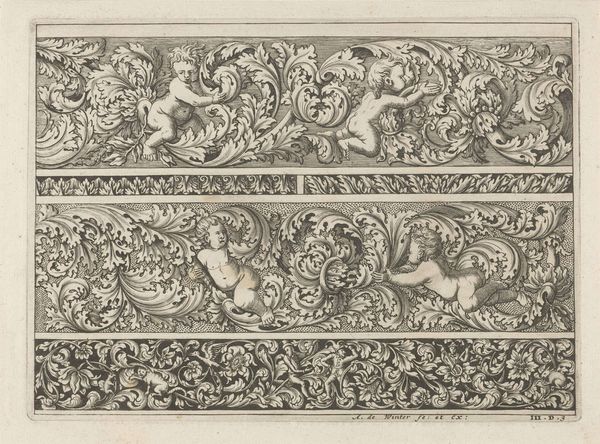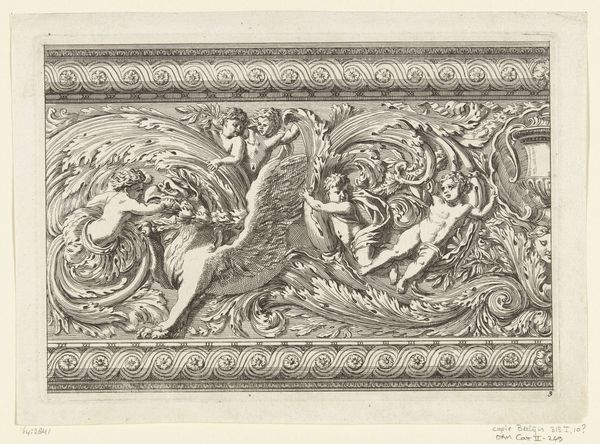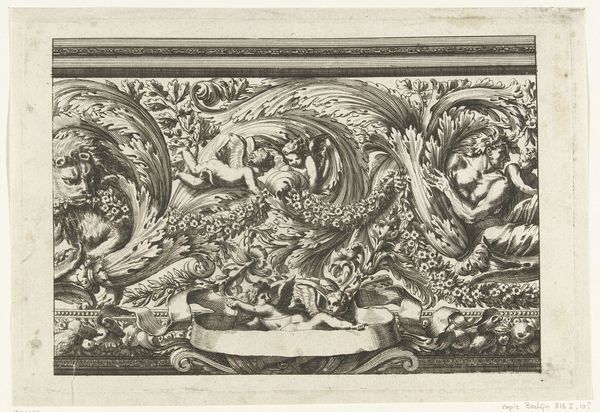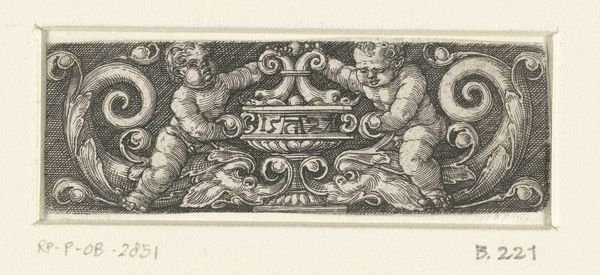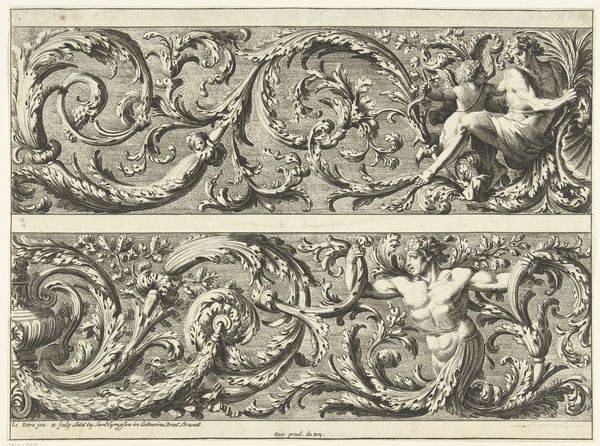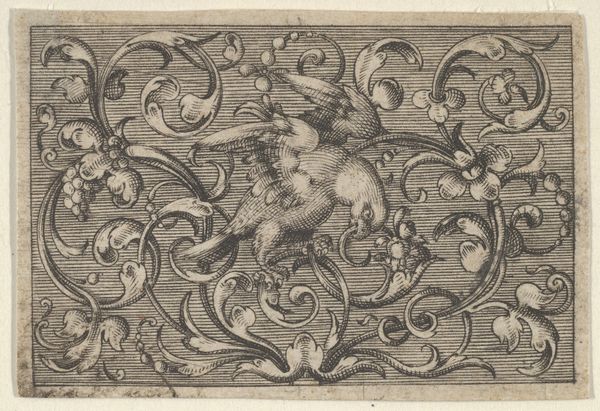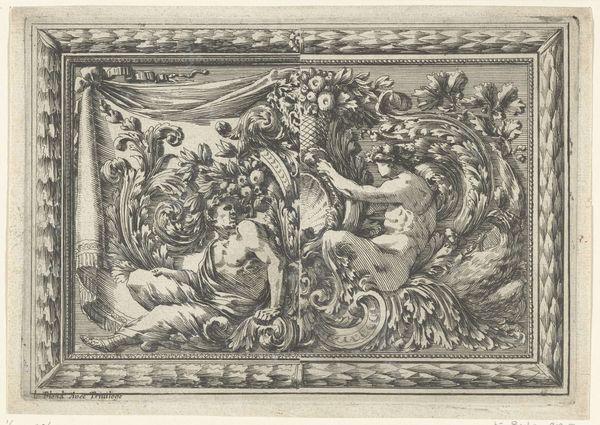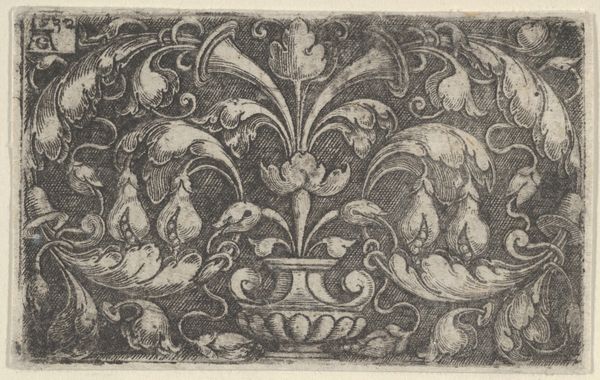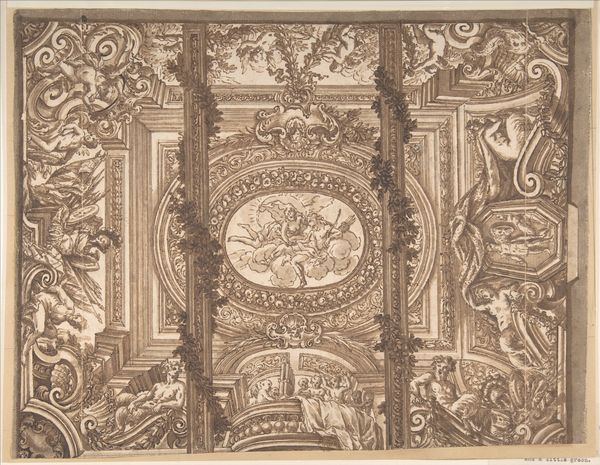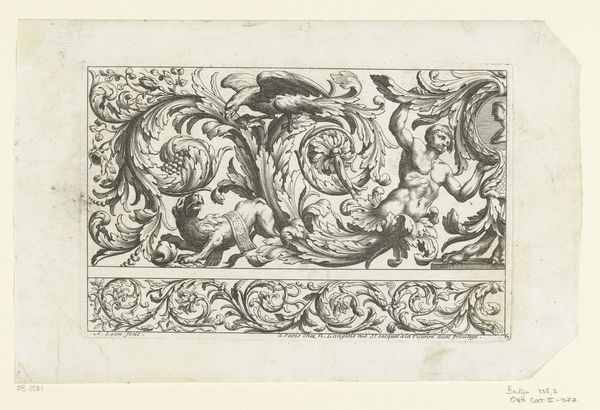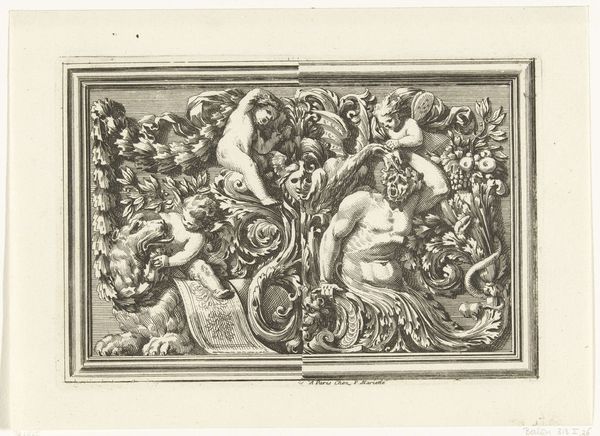
drawing, print, intaglio, engraving
#
drawing
#
baroque
#
pen drawing
# print
#
intaglio
#
figuration
#
pen-ink sketch
#
line
#
engraving
Dimensions: height 138 mm, width 187 mm
Copyright: Rijks Museum: Open Domain
Anthonie de Winter created this ornamental design with etching techniques in the Netherlands, sometime in the late 17th century. At this time, Dutch artists were at the forefront of printmaking, creating images for a growing market of collectors. Ornamental prints like this, depicting foliage and cherubic figures, would have been used as guides for artisans, such as sculptors or furniture makers. These prints reflect a culture that valued both high art and skilled craftsmanship. The imagery of cherubs amidst leafy patterns is pulled from classical antiquity, a sign of cultural sophistication. But in the context of the Dutch Republic, this classicism also signaled civic pride, drawing parallels between their own burgeoning republic and the republics of ancient Rome. To fully understand this print, we can delve into the history of Dutch printmaking, examining the ways in which printmakers negotiated their roles within the art world, balancing artistic expression with commercial demands. The image reminds us that art is always embedded in the social and institutional contexts of its time.
Comments
No comments
Be the first to comment and join the conversation on the ultimate creative platform.
